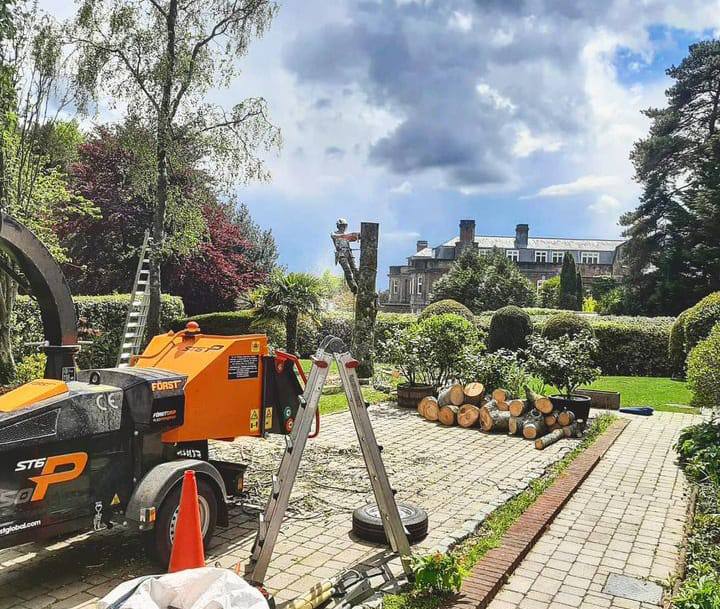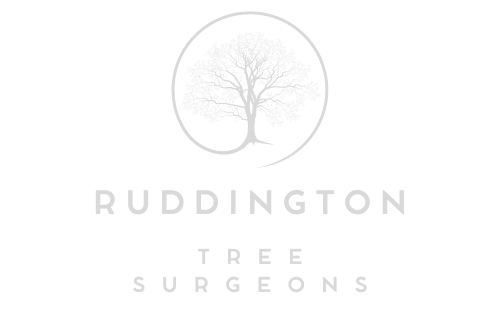How to Spot a Tree in Need of Surgical Care
Trees are vital to our environment, providing shade, beauty, and habitats for wildlife. However, just like any living organism, they require care and attention to thrive. For homeowners in Ruddington, Nottingham, understanding the signs that a tree may need surgical intervention is essential for maintaining a healthy landscape and ensuring safety. Here’s how to spot a tree in need of professional care.
1. Visible Signs of Decay
One of the most noticeable indicators of a tree in distress is visible decay. Look for:
- Hollow trunks or large cavities.
- Fungal growth, such as mushrooms or brackets, which can signal internal rot.
- Cracks or splits in the trunk or major branches.
Decay compromises the tree’s structural integrity, making it more susceptible to falling or breaking.
2. Dead or Dying Branches
Deadwood is a clear sign of a tree in need of attention. You can identify this by:
- Brittle, dry branches that break easily.
- Lack of foliage during the growing season.
- A greyish, lifeless appearance in parts of the tree.
Removing dead branches promptly not only improves safety but also helps the tree redirect its energy to healthy growth.
3. Leaning or Unstable Structure
While some trees naturally lean slightly, a sudden or excessive tilt can indicate root damage or a weakened base. Check for:
- Recent shifts in the tree’s angle.
- Exposed or damaged roots near the base.
- Cracks in the soil around the trunk, which may suggest instability.
Leaning trees can pose significant risks to property and safety, especially during high winds or storms.
4. Pest Infestations
Certain pests can cause severe damage to trees if left unchecked. Signs of an infestation include:
- Holes in the bark, often accompanied by sawdust-like material (frass).
- Discoloured or wilting leaves, despite adequate water.
- Presence of insects such as borers, aphids, or caterpillars.
Tree surgeons can assess the extent of the infestation and recommend treatments to save the tree where possible.
5. Overgrown or Crowded Canopy
A dense or overgrown canopy can prevent sunlight and air from reaching the inner branches, creating conditions for disease and poor growth. Signs include:
- Branches crossing or rubbing against each other.
- Overhanging branches that touch buildings or utility lines.
- Dense foliage that looks cluttered or unbalanced.
Regular pruning or thinning helps maintain the tree’s health and promotes even growth.
6. Sudden Changes in Health
Trees may suddenly show signs of stress, such as:
- Leaves turning yellow or brown out of season.
- Excessive leaf drop during the growing season.
- Branches or sections of the tree dying unexpectedly.
These changes often indicate underlying issues such as disease, poor soil conditions, or root damage that need professional evaluation.
The Importance of Professional Tree Surgery
While minor pruning and maintenance can be done by homeowners, complex issues require the expertise of a qualified tree surgeon. Professional care ensures:
- Proper diagnosis of health issues.
- Safe removal of dead or dangerous branches.
- Effective treatments for diseases or pests.
- Structural support for leaning or unstable trees.
Conclusion
Recognising the signs of a tree in need of surgical care is crucial for preserving its health and ensuring the safety of your property. By addressing issues early, you can prevent further damage and maintain a thriving landscape.
If you suspect a tree on your property requires professional attention, contact Ruddington Tree Surgeons. Our experienced team in Ruddington, Nottingham, provides expert tree care services, from diagnosis to treatment, ensuring your trees remain healthy and safe.
Call us on: 0115 647 1186
Click here to find out more about Ruddington Tree Surgeons
Click here to complete our contact form and see how we can help with your trees needs.

